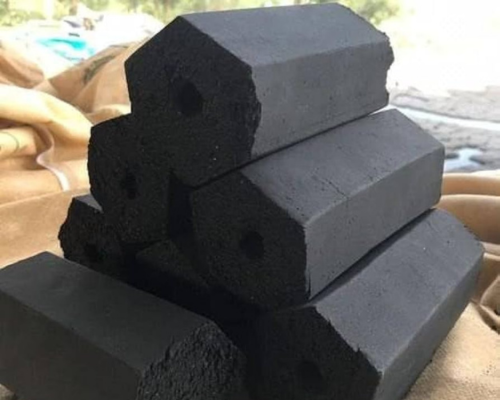-
-
Suite 1, Floor 2, Wing C, Alhaji Adenekan Plaza, Okota Road, Isolo, Lagos State, Nigeria
Blog Details

01
MayWhy Hardwood Charcoal Briquettes Reign Supreme
Why Hardwood Charcoal Briquettes Reign Supreme
Introduction
In recent years there has been quite a rise in the use of Hardwood charcoal briquettes. Both in the industrial sector and in homes. In fact, it is estimated that the charcoal briquette market will experience a 6.6% increase in Compound annual growth rate (CAGR) between 2024 to 2030.
Charcoal briquettes have quite a rich history, as far back as 1895 when it was initially made for industrial purposes, but they did not get traction as a viable energy source. And it continued that way until the 1920s, when the Industrialist Henry Ford popularized the use of charcoal briquettes.
Henry Ford had a lumber company that produced the wood needed for his automobile industry, but he noticed there was so much waste in the lumber production process. Luckily for Mr. Henry Ford, at that time, a scientist from the University of Oregon developed a way to make charcoal briquettes from the waste. So he went ahead to make them and started selling the charcoal briquettes through his car dealership, and this simple business decision eventually grew up to a massive industry.
What is Hardwood Charcoal Briquette
Hardwood charcoal briquettes are manufactured from compressed hardwood charcoal. Hardwood charcoal is the type of charcoal that is charred from hardwood, i.e. oak, hickory, and maple. This type of wood is the most famous due to its burning ability which is much more hotter and longer than wood made from softwoods. The ease of lighting and better-burning patterns that hardwood charcoal briquettes offer trump the other types of charcoal. It is a solid block of hardwoods and it also burns more consistently.
Benefits of Hardwood Charcoal Briquettes
- Longer Burning Time: Because of the dense composition and uniform shape of the briquettes, they tend to last longer than lump charcoal, as a result, it is well-suited cooking methods that require slow and steady heating such as roasting vegetables.
- Consistent Heat Output: Once again, the uniform output and composition also ensure a steady and even level of heat during combustion.
- Cleaner and Less Smoke: It produces less smoke during combustion
- Environmentally Friendly: Since it is made from the waste of hardwood charcoal, it is considered environmentally friendly.

How Hardwood Charcoal Briquettes Are Made
So, how do we make briquettes, we will break them down into 3 parts
Raw Materials:
- Hardwood Charcoal: The base fuel for making the briquettes is Hardwood charcoal, which is obtained from burning wood such as ok or beech. This is usually done in a low-oxygen environment such as kilns or drums.
- Binders: The Binder acts as the glue to hold the particles of the charcoal together, and they help give the shape of the briquette. Some of these binders could be starch or natural waxes.
Production Process:
- Carbonization (if not already done): At this point, you should have your charcoal, but if it is not yet done, carbonization is the process of turning the raw hardwood into charcoal, where as said earlier, you burn the wood in an environment with minimal oxygen.
- Pulverization: The charcoal from the carbonization process is then crushed into a fine powder, there are machines for getting this done. This crushing enables the briquettes eventually formed to burn effectively.
- Mixing: The fine charcoal you get from the pulverization process is then mixed with whichever binder you have chosen. This is done in large industrial mixers. In some cases, additional ingredients like fillers or accelerants may also be added.
- Forming: This is the last stage of the process, where you use the briquette press to mold the mixture from the previous process into the shape needed for the briquettes.
Read About How to Make Hardwood Charcoal: 8 Simple Steps
Quality Control Measures:
- Moisture Content: The moisture level is strictly monitored to ensure the briquettes burn properly and don’t crumble.
- Density: Consistent density ensures even burning and avoids hot spots.
- Ash Content: The amount of ash left behind after burning is checked to minimize waste.
- Burning Performance: Samples are test-burned to assess factors like ignition time, burning duration, and heat output.
Comparing Hardwood Charcoal Briquettes to Other Fuels
- Charcoal Briquettes vs. Lump Charcoal: Briquettes are a convenient choice – uniform, easy to light (with additives), and burn long for slow cooking. But, they leave more ash and impart less smoky flavor. Lump charcoal on the other hand is all-natural, burns hotter for searing steaks, and lights faster, but requires temperature control. It’s pricier and burns quicker, but adds a smoky taste. Choose convenience and long burns with briquettes, or go for pure flavor and heat control with lump charcoal.
- Charcoal Briquettes vs. Gas Grills: Comparing briquettes with gas grills, gas grills offer precise temperature control, and are faster, but can’t provide that smoky taste. Gas grills al tend to be more expensive. Both have their place, so it depends on your priorities.
Read About Hardwood Charcoal Vs Hardwood Briquettes
Conclusion
In conclusion, Hardwood Charcoal Briquettes are one of the most useful and popular forms of charcoal briquette available. From being used in science experiments to being used as fuel for barbeques and grills, they have many different and versatile uses. With this guide, you should now have a better understanding of what Hardwood Charcoal Briquettes are, their various types, how they’re made, how they provide advantages to users, and how to store and use them safely. Moreover, manufacturers can take advantage of understanding the process and best practices to maximize the full potential of hardwood charcoal briquettes.
Author's Details
Japhet Orha
Japhet Orha, is Market Lead for Gombella Integrated Services, driven by a fervent love for cultivating sustainable growth. I make sure the best products reaches all our clients.Other posts by Japhet Orha